A roast pork loin is one of those special occasions dishes that everyone gets excited about. Although it's relatively easy to prepare, the sight of a nicely browned, juicy roast is simply irresistible. A pork loin baked in the oven can become dry and tough, but there are few techniques you can use to guarantee tender, moist meat. Once you learn the basics, you'll make perfect roast pork every time.
Brining
A brine is a solution of salt dissolved in water, and it's the key to ensuring moist, tender pork. The roast is submerged in the brine for several hours, infusing it with moisture that remains after the meat is cooked. A basic brine ratio for pork is about 1/2 cup of kosher or sea salt for every four cups of water. Get creative with your brine and season it with brown sugar or maple syrup. You can also add flavorful aromatics like bay leaves, whole cloves of garlic, sliced fresh ginger or whole peppercorns. Make sure the brine is completely chilled before adding your roast. Allow the pork to brine for two to 12 hours. Always brine meat covered, in the refrigerator, and discard after use. Remove the roast from the brine and pat it dry before cooking.
Preparation
Pork loin roast often comes with a thick, opaque layer of fat attached to one side. Although removing this layer of fat can cut down on calories, the fat actually goes a long way in ensuring a moist, tender roast. As the pork cooks, this fat renders and melts off, basting the meat in flavorful juices as it dissipates. Before cooking, rub the roast with olive oil, then coat it in any herbs and spices you like. If you brined the pork, you won't need to season it with any additional salt. Place the roast in a roasting pan with the layer of fat facing up.
Cooking
Bake your pork loin roast slowly at a relatively low temperature to guarantee a tender, juicy dinner. Begin by roasting it at a higher temperature to get a nicely browned exterior and release complex flavor compounds. Preheat your oven to 450 degrees Fahrenheit, then place the pork in its roasting pan on the center oven rack. After 10 minutes, reduce the oven temperature to 250 F. Continue cooking until the internal temperature reaches 145 F, about one hour for a three-pound roast. Cooking times can vary greatly depending on the size and shape of your roast, so check the internal temperature often to prevent overcooking.
Resting
Allowing the meat to rest after it's finished cooking is essential for baking a juicy roast. If you slice into the pork immediately after removing it from the oven, all those flavorful juices will wind up on your cutting board instead of in your mouth. Transfer the roast to a cutting board, cover loosely with aluminum foil and let rest for at least 10 minutes prior to slicing. Take into account that the temperature of the meat will continue to rise about five degrees during the resting period.
Related Articles
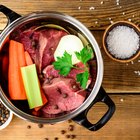
How to Slow Cook a Pot Roast With Beef ...
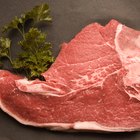
Perfect Way to Cook a Pork Chop in the ...
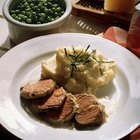
How to Make a Juicy Pork Tenderloin
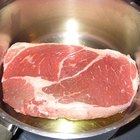
How to Cook a Tender Roast
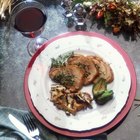
What Are the Temperatures for Slowly ...

How to Cook a Moist & Tender Center Cut ...
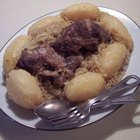
How to Cook a Boneless Sirloin Pork ...
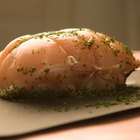
How to Braise Pork
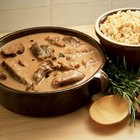
How to Cook a Deer Neck Roast in a Slow ...
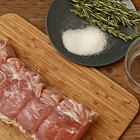
How to Brine Pork Roast

How to Cook Beef Top Round Pot Roast
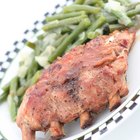
How to BBQ Ribs on a Smoker

How to Cook Texas Broil Roast

How to Cook Pork Hamonado
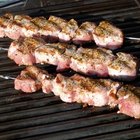
How to Cook Pork Loin

How to Cook a Frozen Pork Fillet in the ...

How to Make Pulled Pork In A Slow Cooker
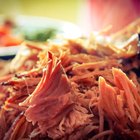
Can You Slow-Cook a Brined Pork?

How to Check the Internal Temp of a ...

How to Cook Smoked Pork Knuckles
References
Resources
Writer Bio
Irena Eaves began writing professionally in 2005. She has been published on several websites including RedPlum, CollegeDegreeReport.com and AutoInsuranceTips.com. Eaves holds a Bachelor of Science in journalism from Boston University.